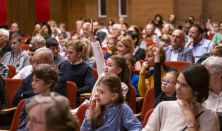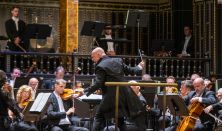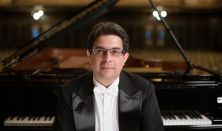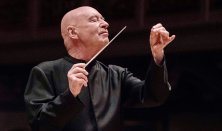Program

WE CELEBRATE THE MASTER OF THE CELLO: MIKLÓS PERÉNYI - Vivaldi / Kodály / Erkel / Elgar L/6.
Miklós Perényi, who just recently celebrated his 75th birthday, holds a prominent place among the world-famous and highly esteemed instrumentalists of our time. He has cultivated a close friendship with the MÁV Symphony Orchestra for decades, which is why he will be honoured with a special concert, where he will be making his debut as a chamber musician and even as a teacher, for he will be performing Vivaldi's double concerto with one of his students.
more
Nincs aktuális előadás
Ön egy múltbeli eseményre keresett rá. Kérjük, válogasson aktuális kínálatunkból a Jegy.hu keresőjében!
Last event date: Friday, May 31 2024 7:00PM
PROGRAM
Kodály: Duo for Violin and Cello, Op. 7
Erkel: Festival Overture
Elgar: Cello Concerto in E Minor
FEATURING
Péter Csaba - violin
CONDUCTOR
Violinist and conductor Péter Csaba was born in Cluj-Napoca, Romania, but has lived in France for several decades. He is an active and successful conductor and teacher. In addition to conducting, he will also play the violin at our concert as a tribute to Miklós Perényi and Zoltán Kodály. The Duo for Violin and Cello is a piece from Kodály's youth, which allows the audience to enjoy the beauty of playing together and the 20th century interpretation of the Hungarian folk music he collected.
Our offer
MŰSOR Mendelssohn: e-moll hegedűverseny, op.64 Furtwängler: II. e-moll szimfónia KÖZREMŰKÖDIK Amira Abouzahra - hegedű VEZÉNYEL Neeme Järvi
Bánk bán – koncertszerű előadás Molnár Levente, Kesselyák Gergely
Suggestions
Mediterrán ünnep Farkas Gábor, Farkas Róbert
A Ránki-család hangversenye Takács-Nagy Gábor, Ránki Dezső, Ránki Fülöp, Klukon Edit
BARTÓK FUNDAMENTUM - Christoph Eschenbach MŰSOR Bartók: I. hegedűrapszódia, BB 94b Bartók: II. zongoraverseny, BB 101 Bartók: Concerto zenekarra, BB…
Warning! The basket time limit is about to expire!
item(s) in basket
total:
Time limit has expired. Please, put item(s) in to basket again.






